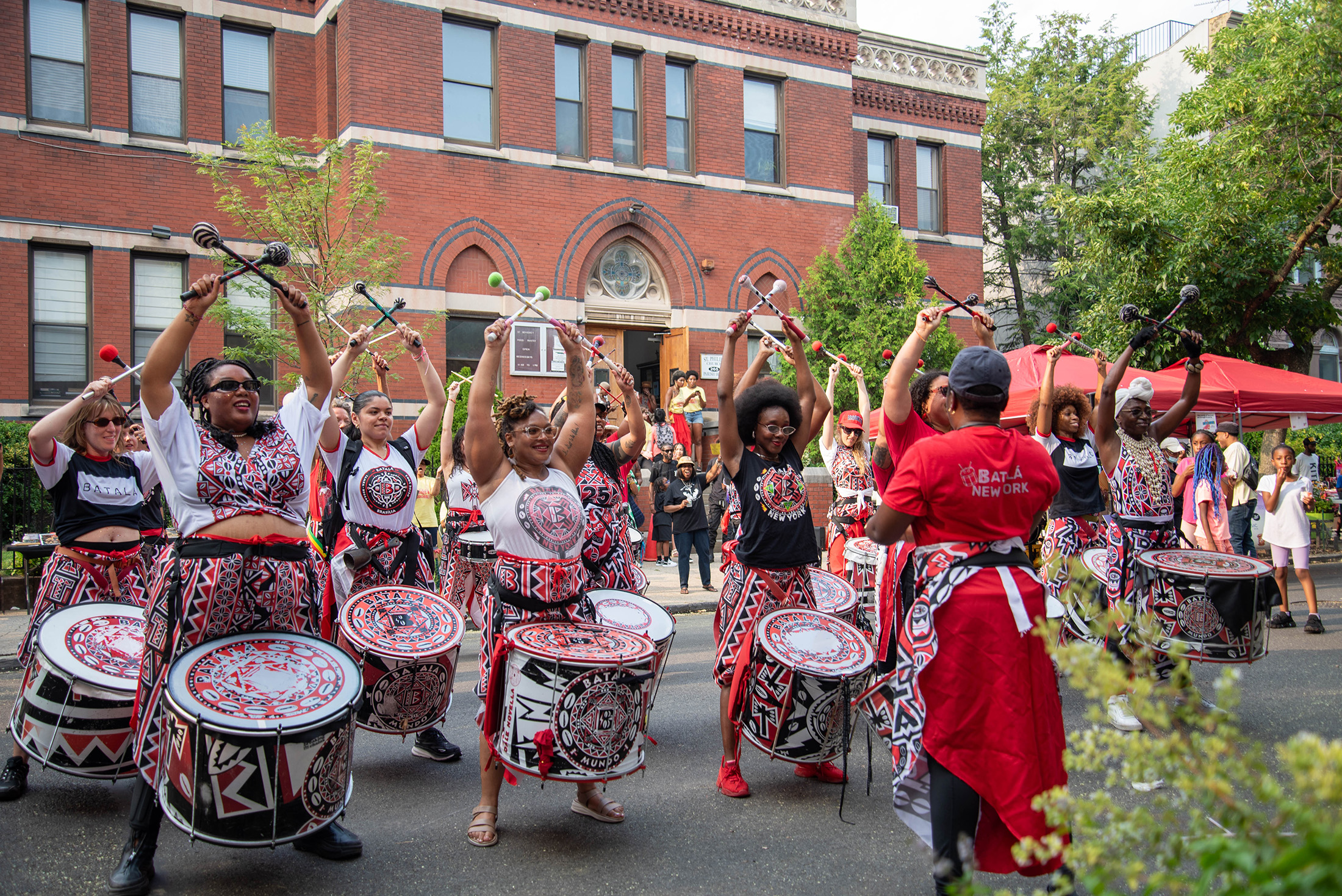Public Hearing on Admiral's Row Held Last Night
Following up on last December’s public meeting, the National Guard held another informational forum last night at Borough Hall to solicit public input about the future use of the site; since the Guard has already determined that the row of ten 19th-century houses is eligible for listing on the National Historic Register of Historic Places,…


Following up on last December’s public meeting, the National Guard held another informational forum last night at Borough Hall to solicit public input about the future use of the site; since the Guard has already determined that the row of ten 19th-century houses is eligible for listing on the National Historic Register of Historic Places, it is required by law to consider all the possible outcomes and implications that a transfer of the property would have. Brooklyn Navy Yard Development Corp’s publicly stated plan to fully demolish the site is considered an “adverse effect” and so, by Federal law (Section 106 of the National Historic Preservation Act), the Guard is required “to develop and evaluate alternatives or modifications to the undertaking that could avoid, minimize, or mitigate” those adverse effects, such as requiring preservation of some or all of the houses.
 Prior to the public hearing, a press conference was held with just about every politician in town, including Councilmembers Letitia James and David Yassky, Senator Velmanette Montgomery, reps from the Borough President’s office and Congressman Ed Towns’ office; other speakers included Carl Hum from the Brooklyn Chamber of Commerce, Andrew Kimball and Alan Fishman from the Navy Yard, and representatives from the Ingersoll, Whitman and Farrugut Houses. In our opinion, it was a disappointing display of political showmanship which rested on the intellectually-rickety concept that this matter is an either-or choice between preservation on the one hand and fresh food for the poor on the other when any reasonable person can see that there are a million (or at least ten, that is) shades of grey in between. One specific proposal that would enable preservation and the creation of a supermarket has already been floated by Brent Porter of Pratt. The Municipal Art Society also announced last night that it was working with the Historic Districts Council, the Fort Greene Association, the Society for Clinton Hill, the Historic Wallabout Association and the Myrtle Avenue Brooklyn Partnership to solicit concepts for a have-your-market-and-save-the-houses-too solution; more details should be forthcoming shortly. It was also whispered in our ear last night that the BNYDC had not received any specific proposals from a private developer for the houses (which take up only about two of the six acres of the site) but that BNYDC would consider such proposals. You can check out information on the Historic Preservation Act and the Admirals Row study commissioned by the National Guard here; to submit your testimony (which can be as brief as “I support a plan that would create a supermarket and preserve the Admirals Row houses”), you can send an email to AdmiralsRowBNY@usace.army.mil.
Prior to the public hearing, a press conference was held with just about every politician in town, including Councilmembers Letitia James and David Yassky, Senator Velmanette Montgomery, reps from the Borough President’s office and Congressman Ed Towns’ office; other speakers included Carl Hum from the Brooklyn Chamber of Commerce, Andrew Kimball and Alan Fishman from the Navy Yard, and representatives from the Ingersoll, Whitman and Farrugut Houses. In our opinion, it was a disappointing display of political showmanship which rested on the intellectually-rickety concept that this matter is an either-or choice between preservation on the one hand and fresh food for the poor on the other when any reasonable person can see that there are a million (or at least ten, that is) shades of grey in between. One specific proposal that would enable preservation and the creation of a supermarket has already been floated by Brent Porter of Pratt. The Municipal Art Society also announced last night that it was working with the Historic Districts Council, the Fort Greene Association, the Society for Clinton Hill, the Historic Wallabout Association and the Myrtle Avenue Brooklyn Partnership to solicit concepts for a have-your-market-and-save-the-houses-too solution; more details should be forthcoming shortly. It was also whispered in our ear last night that the BNYDC had not received any specific proposals from a private developer for the houses (which take up only about two of the six acres of the site) but that BNYDC would consider such proposals. You can check out information on the Historic Preservation Act and the Admirals Row study commissioned by the National Guard here; to submit your testimony (which can be as brief as “I support a plan that would create a supermarket and preserve the Admirals Row houses”), you can send an email to AdmiralsRowBNY@usace.army.mil.
Pratties Have ‘Cake-and-Eat-It’ Design for Admiral’s Row [Brownstoner]
Guard Starts Talks ‘To Come Up With Alternatives’ For Row [Brownstoner]
James Opens Door to (Partial) Admiral’s Row Preservation [Brownstoner]





correct me if i’m wrong, but doesn’t the law from sections 110 & 106 of the national preservation act say that federal agencies (national guard?) are responsible to maintain buildings/property in a particular manner? If admiral’s row is transferred to a non-federal entity (as has been rumored in the press) wouldn’t that render that responsibility null and void?
the below is taken from http://www.nps.gov
“Section 110 of the National Historic Preservation Act (hereinafter referred to as NHPA or the Act) sets out the broad historic preservation responsibilities of Federal agencies and is intended to ensure that historic preservation is fully integrated into the ongoing programs of all Federal agencies. This intent was first put forth in the preamble to the National Historic Preservation Act upon its initial adoption in 1966. When the Act was amended in 1980, section 110 was added to expand and make more explicit the statute’s statement of Federal agency responsibility for identifying and protecting historic properties and avoiding unnecessary damage to them. Section 110 also charges each Federal agency with the affirmative responsibility for considering projects and programs that further the purposes of the NHPA, and it declares that the costs of preservation activities are eligible project costs in all undertakings conducted or assisted by a Federal agency.â€
And
“Purposes of the section 106 process. Section 106 of the National Historic Preservation Act requires Federal agencies to take into account the effects of their undertakings on historic properties and afford the Council a reasonable opportunity to comment on such undertakings. The procedures in this part define how Federal agencies meet these statutory responsibilities. The section 106 process seeks to accommodate historic preservation concerns with the needs of Federal undertakings through consultation among the agency official and other parties with an interest in the effects of the undertaking on historic properties, commencing at the early stages of project planning. The goal of consultation is to identify historic properties potentially affected by the undertaking, assess its effects and seek ways to avoid, minimize or mitigate any adverse effects on historic properties.â€
One polician was noticeably absent: Bill de Blasio. Where does our future Borough President stand on this? I’d really like to know.